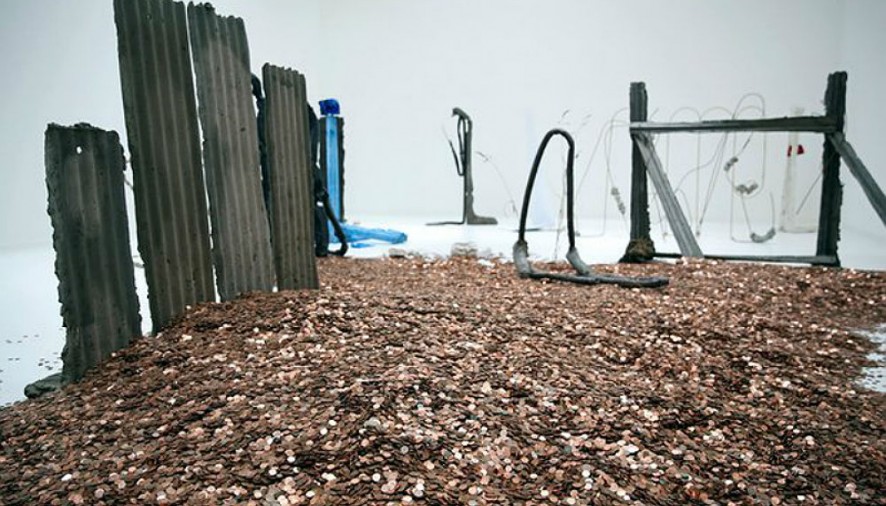Gaudy, vital and more controversial than ever, The Turner Prize is back. Writer Connie Lawfull takes us through this year‘s Turner Prize nominees.
The Turner prize shook up the art world once again in 2015, awarding the prize to Assemble, a group considered by many to be a ‘non-artist’ collective. With the opening of this year’s exhibition, the spotlight is back on the diverse, bizarre and ever changing world of contemporary art. Can this year impress, inspire and divide the country? Or are we getting too used to obscure contemporary art to be affected by it?
Are we getting too used to obscure contemporary art to be affected by it?

Helen Marten’s collection of handmade and found objects seem unrelated, and resemble a curious workstation, abandoned, mid-activity, by someone in a hurry. The eye jumps from piece to piece, attempting to find some meaningful association and making infinite conclusions.
This is exactly what Marten wants. Recognising that media development has led to a world saturated by imagery, she encourages us to really consider what is in front of us, a much slower and more intense process of looking. Experiencing her work is almost meditative, providing a refreshing break from the visual bombardment of everyday life.

Sharp, analytical and witty is Anthea Hamilton, who attempts to provoke a reaction from her audience. For sure, her use of unexpected material and scale trigger a reaction – who couldn’t respond to a towering 16ft sculpture of a butt? For me this is where the impact ends. Each piece stems from meticulous research, and once you understand her obsession with the likes of Pesce or Artaud, the work is enhanced. However, while I am envious of her informed and distinctive gaze on the world, I fear that those of us who do not share it may be shut out from ever appreciating the work’s full impact.
How much, or how little can we really be expected to live off? Michael Dean strikes right into the heart of this increasingly controversial question, displaying £20,435.99s in pennies amongst his sculptures. Why £20,435.99? Because this is exactly one penny under what the UK government considers to be enough for two adults and two children to live off for a year. Left to contemplate our society and social responsibility, this piece is extremely evocative, serving as a perfect example of how contemporary sculpture can be used to make powerful social comment.
To many, Josephine Pryde remains an enigma. Her photographical series borrows the visual language of advertising to sensitively portray hands in contact with a series of objects. Despite the seeming insignificance of the objects, you feel you are witnessing a deeply private moment of connection, finding a new intimacy in our physical connections with the world around us. Despite probing by many, it is said Pryde “never answers questions, she just poses more”. So whether this sensation of connection is what Pryde hoped to achieve remains a mystery. The public will have to decide for themselves whether this is “one of the joys of Josephine Pryde”.
While critics have been impressed all round, there is, I feel, a clear and obvious winning choice. With her work’s keen awareness of both itself as an art piece and its role in the wider world, the winner has to be Marten.
Connie Lawfull
(Featured imagine artist Michael Dean’s entry, all images courtesy of Martin Godwin)

